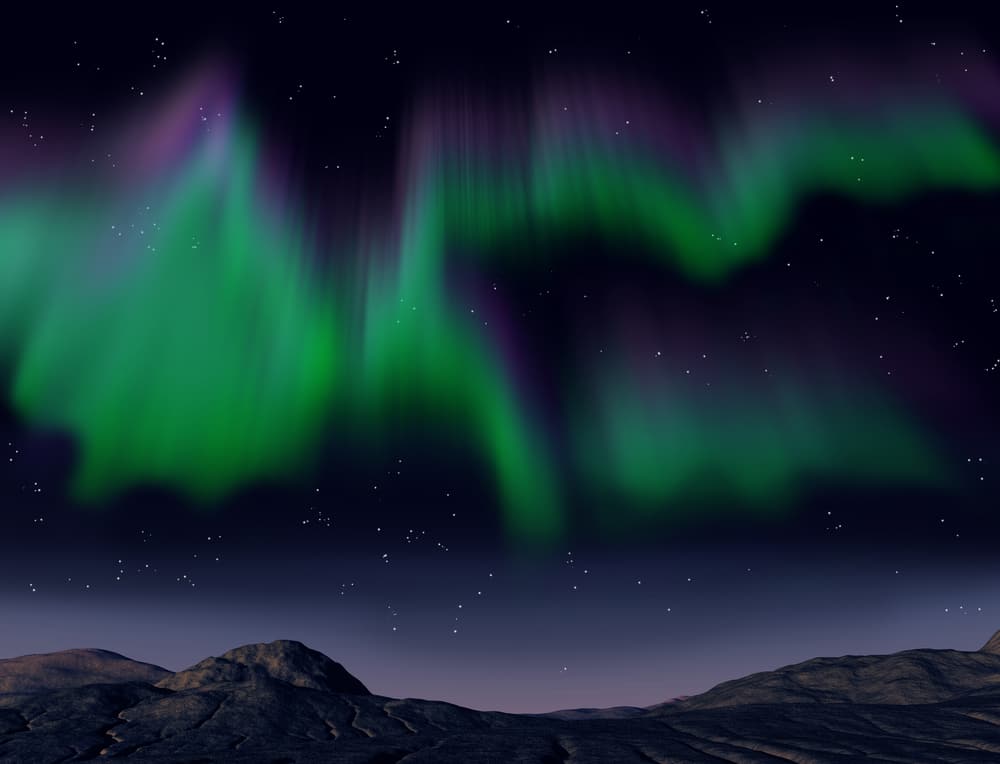The Northern Lights arise from charged particles that spiral down towards the magnetic poles. The National Institute of Astrophysics has created an app thanks to augmented reality that allows users to reproduce them in the surrounding environment.
The latter allows you not only to observe the Northern Lights wherever you are, but also to listen to them, thanks to the transformation of radio waves emitted by a real wave into sound waves. This is one of the possibilities of the new AR (Augmented Reality) app by Sorvegliati Spaziali, INAF’s space dissemination project on planetary defense.
The Northern Lights
An aurora borealis is formed due to the interaction between charged particles coming from the Sun, such as protons and electrons, with the gas molecules that make up the Earth’s ionosphere. The latter indicates the part of the atmosphere between 100 and 500 km above sea level. These, giving rise to the “solar wind”, flow at very high speeds along the magnetic field lines towards the two magnetic poles of the Earth, where, colliding with the atmosphere, they produce visible light. Every single interaction generates energy and therefore a small flash of light, billions of these small flashes in sequence generate the effect of auroral arcs.
Virtual Northern Lights
The Lights Over Lapland agency had already created video experiences in Lapland based on the editing of materials provided by photographers and virtual reality by European video makers.
Virtual journeys were therefore created to discover the beauties provided to us by the Northern Lights and beyond, which have the task of generating wonder, amazement and surprise in those who observe them, as happens in the real world. So thanks to a click on the screen you can immerse yourself in the landscape and live the experience without leaving home.
The Space Surveillance project
The Space Surveillance project, Learning about space to defend the planet has existed since 2021. It was born from an idea by Daria Guidetti of INAF in Bologna, it was developed together with researchers from INAF in collaboration with the Demarka company.
Credits: Space Guards
It includes a website divided into sections: Comets and asteroids NEAR EARTH, Space Waste, Space Meteorology, Meteors and Meteorites. The project explains and informs about events that can have effects on the earth. They range from solar bulletins, focused on the activities of our star, to news, glossaries and videos on orbiting debris: asteroids, meteors and meteorites. Thus was born a tool to describe the work of women and men involved in research on planetary defense.
The website has been online since October 2021, in which Planetary Defense is told through a variety of INAF informative products. There are therefore news, educational videos, interviews, augmented reality, bulletins on the passage of potentially dangerous asteroids containing advice on how to observe them with amateur telescopes, a glossary of terms and acronyms and reviews. Furthermore, Sorvegliati Spaziali also takes care of relaunching news from other research institutions.
The birth of the app
The new app is available for free, showing augmented reality content with information about the space in interactive mode. It is also possible to simulate the arrival of an asteroid in any environment, but also display graphics of satellites or space debris in orbit, meteorites and constellations or the play of light of the Northern Lights.
The app made its debut in preview at the Iaa Planetary Defense Conference, in Vienna, last April and was then presented to the public on the occasion of Asteroid Day 2023 at the Salaborsa Library in Bologna (26 June – 2 July 2023) . From today it is possible to download the app on iOS and Android devices, completely free of charge.
I siti partners
Space Surveillance enjoys many “Friendly Sites”, i.e. many research institutes including: the National Institute of Astrophysics, INAF Institute of Radioastronomy, INAF Astrophysical Observatory of Turin, INAF Astronomical Observatory of Abruzzo, INAF Astronomical Observatory of Cagliari, INAF Observatory Astronomical Observatory of Padua, INAF Astronomical Observatory of Trieste, INAF Observatory of Astrophysics and Space Science and the Department of Aerospace Sciences and Technologies of the Polytechnic of Milan.
